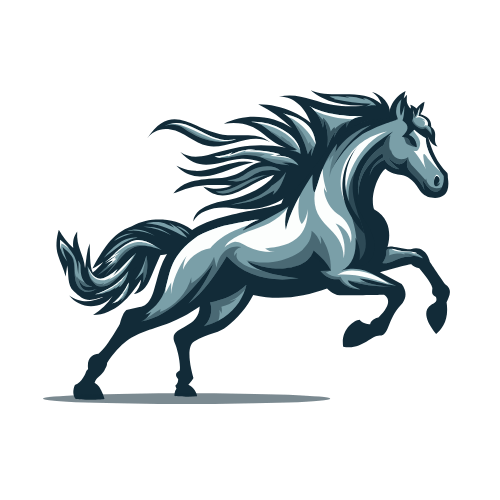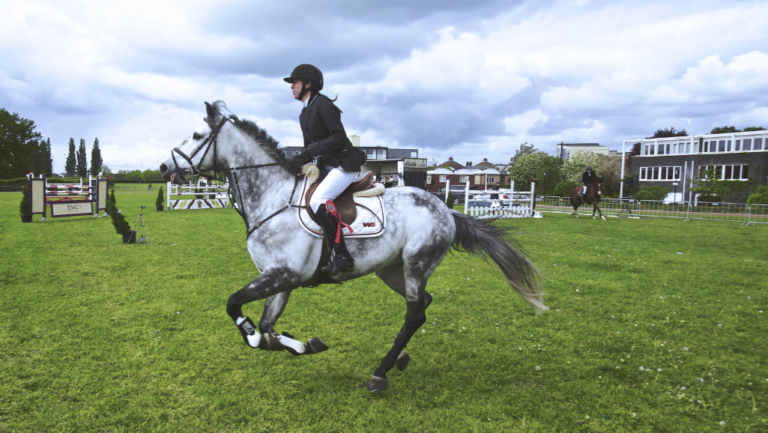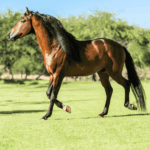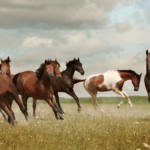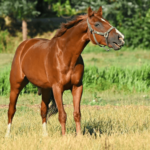Keeping the right riding position is key for both the rider and the horse, no matter the style. It lowers the risk of injury, helps the rider and horse work together better, and boosts performance. Dressage riders are especially judged on how well they sit and their overall position.
But, getting the right equestrian posture isn’t easy for everyone. Many riders pick up bad habits because they’re not strong enough or balanced well. Correct Horse Riding Position Diagram
To get better, it’s important to build good habits, strengthen your core, and work on balance. A detailed diagram can help riders of all levels. It shows the important parts of a correct riding position, like posture, balance, and how to hold your body.
Key Takeaways
- A correct riding position is vital for both rider and horse safety and performance
- Dressage riders are judged on the effectiveness of their seat and overall equestrian posture
- Weakness and lack of balance can lead to poor riding stance
- Core strength, suppleness, and an independent seat are essential for improving riding position
- A comprehensive horse rider seating position diagram can serve as a valuable visual reference
The Importance of Proper Riding Position
Keeping the right riding position is key for both the rider and the horse. The right seat and leg position help create a balanced partnership. This stance also boosts the rider’s comfort and confidence, and helps the horse perform better.
The rider’s position greatly affects the horse’s movement and balance. A small mistake in posture can make the horse uncomfortable, like when someone leans on you. So, riders of all levels should always check and adjust their position to avoid bad habits.
Benefits for the Rider
Having the right riding position brings many benefits for the rider, including:
- Enhanced comfort and confidence in the saddle
- Improved balance and stability
- Reduced risk of injury by minimizing stress on joints
- Better absorption of the horse’s motion
- Clearer communication with the horse
Correct equestrian posture makes riding more comfortable and secure. It also helps riders connect better with their horses.
Benefits for the Horse
A proper riding position also benefits the horse a lot, such as:
- Promoting relaxation and responsiveness
- Easier weight-bearing for the horse
- Reduced tension and uneasiness
- Improved performance and harmony
- Even muscle development and suppleness in the horse’s back
When the rider is balanced and aligned, the horse can move more freely. This makes riding more enjoyable for both the horse and rider.
Proper riding position is crucial for the horse’s movement and balance. Deviation from a correct position can significantly impact the horse, akin to the feeling of imbalance if someone were sitting on your shoulders and leaning to one side.
In conclusion, the right riding position is very important. By focusing on the correct techniques, both horse and rider can feel more comfortable and perform better. This creates a stronger and more harmonious partnership.
Key Elements of Correct Riding Position
To ride well, you need to know the basics of a good seat. A balanced seat makes riding more comfortable and helps you talk to the horse better. This guide shows how to sit right and stay steady.
Posture and Alignment
Good riding starts with the right posture and alignment. You should line up your ear, shoulder, hip, and heel in a straight line. This keeps you balanced and lets you move with the horse.
Checking your position often helps keep you on track. It stops bad habits from forming.
Balance and Weight Distribution
Balance and where you sit are just as important. Sit evenly on your seat bones, avoiding leaning. Keep your pelvis level and relaxed to feel the horse’s moves.
This balance makes you stable and helps you talk to the horse better.
Leg and Foot Positioning
How you sit your legs and feet is key. Turn your thighs in and press your knees down. Make sure there’s no gap between your knee and the saddle.
Put your feet in the stirrups with your heels down and toes up. This lets you give clear signals to the horse.
| Leg Position | Effect on Horse | Rider Experience |
|---|---|---|
| Thighs well-turned in, knees pressing down | Clear and consistent leg aids | Improved stability and control |
| Daylight between knee and saddle | Horse may become dulled to leg aids | Weakened position, less effective communication |
| Heels directly under hips, stirrup leathers perpendicular | Balanced and secure seat | Less fatigue, more enjoyable riding |
Arm and Hand Placement
Your arms and hands are important for a good seat and talking to the horse. Hold your hands above and in front of the saddle. Keep your thumbs on top and fingers around the reins.
Keep your elbows bent and close to your body. This lets you feel the horse’s mouth well. It helps you give clear signals.
Proper rider position requires awareness and strengthening of the core muscles, as well as regular instruction to correct any crooked habits that may develop due to muscle memory.
Focus on posture, balance, leg and foot position, and arm and hand placement. These tips will make your riding better. This guide is great for all riders, helping you stay balanced and effective.
Correct Horse Riding Position Diagram
A good horse riding position is key for the rider’s comfort and the horse’s balance. Knowing how to align each body part can make riding better and safer. Here’s a detailed guide to the perfect riding posture.
Visual Representation of Ideal Riding Posture
A simple diagram can show the rider’s body alignment. A line from the ear, through the shoulder, hip, and heel, is the ideal. It shows the need for a straight and balanced posture in the saddle.
Detailed Explanations of Each Body Part’s Positioning
To get the right riding position, focus on each body part’s placement. Below is a detailed guide on how to align key areas:
| Body Part | Correct Position |
|---|---|
| Head | Keep the head up, with the chin parallel to the ground and eyes looking forward. |
| Shoulders | Maintain relaxed, square shoulders, with the chest open and lifted. |
| Arms and Elbows | Elbows should be bent and close to the body, forming a straight line from the elbow to the horse’s mouth. |
| Hands | Hold the reins with soft, relaxed hands, keeping them just above the horse’s withers. |
| Back | Maintain a straight, neutral spine with a slight arch in the lower back. |
| Hips | Keep the hips level and centered in the saddle, allowing them to move with the horse’s motion. |
| Legs | Thighs should lie flat against the saddle, with knees slightly bent and pointing towards the horse’s ears. |
| Feet | Place the balls of the feet on the stirrups, keeping the heels down and toes pointing forward. |
Following this guide and understanding horse biomechanics helps riders find a balanced position. This diagram is useful for all riders, helping them and their horses move in harmony.
Common Mistakes in Riding Position
Even the most experienced riders can make common mistakes in their riding form. These errors can make it hard to communicate with the horse. They can also cause discomfort and even injury for both the rider and the horse. By knowing and fixing these mistakes, riders can improve their performance and enjoy a better partnership with their horses.
One big mistake is having a rounded or hunched back. This happens when riders let their shoulders roll forward. It also causes the pelvis to tilt, making it hard to balance and move smoothly with the horse. Riders need to keep their spine straight and relaxed to distribute their weight well and communicate effectively.
Another mistake is gripping too hard with the knees or pushing down in the stirrups. It might feel like it helps with stability, but it actually tightens up and limits the horse’s movement. Riders should instead let their legs drape softly around the horse’s barrel for a more stable and balanced seat.
| Mistake | Consequence | Correction |
|---|---|---|
| Rounded shoulders | Compromised upper body alignment | Keep shoulders back and down |
| Arched lower back | Tilted pelvis and disrupted balance | Maintain a straight, relaxed spine |
| Gripping with knees | Tension and restricted horse movement | Softly drape legs around horse’s barrel |
| Pushing down into stirrups | Instability and loss of seat connection | Allow weight to sink into heels |
Other mistakes include leaning too far forward or back, twisting the body, and letting the legs swing or drift away. These errors mess up the rider’s balance and make it hard to communicate with the horse. By comparing their stance to a correct riding diagram, riders can spot and fix any form issues.
The journey to proper riding form is ongoing and requires dedication and a willingness to learn. By working on a balanced riding position, riders can reach their full potential with their horses.
Getting help from a good riding instructor is key to improving. A skilled coach can spot and help fix specific issues, leading to a better riding experience for everyone involved.
Effects of Poor Riding Position on Horse and Rider
A bad riding position can harm both the horse and the rider. It affects their comfort, performance, and health. Riders need to know how a poor position can hurt their skills and the bond with their horses.
Discomfort and Tension for the Horse
A rider sitting crookedly can upset the horse. The horse might get sore or stiff trying to balance the rider. This is bad because the horse’s front legs carry most of its weight.
Increased Risk of Injury for the Rider
A bad riding position can also hurt the rider. It can strain their back, hips, and knees. This can cause long-term pain and injuries. Riders might also fall off more easily.
Reduced Communication and Performance
Good communication between horse and rider is key. But a bad position can mess this up. The horse might not understand the rider’s cues well. This can make their performance suffer.
| Aspect | Effect of Poor Riding Position |
|---|---|
| Horse Comfort | Discomfort, tension, muscle soreness, stiffness, lameness |
| Rider Safety | Increased risk of injury, strain on back, hips, and knees, difficulty staying secure in the saddle |
| Communication | Unclear cues, confusion, frustration, reduced performance |
| Weight Distribution | Uneven loading on horse’s forelimbs, increased fetlock extensions, higher vertical ground reaction forces |
Riders need to work on their riding position. They should focus on posture, alignment, and how they distribute their weight. By improving their position, riders can make their riding better for themselves and their horses.
Exercises to Improve Riding Position
To get a proper riding stance, you need exercises both on and off the horse. These help improve your seat, balance, and how you move with your horse. Doing different exercises can really help your riding get better.
Core Strengthening Exercises
A strong core is key for staying straight and stable in the saddle. Try planks, bridges, and seated twists to build your core. These exercises help you stay upright, avoid slouching, and move better with your horse.
Balance and Coordination Drills
Good balance and coordination are important for a steady seat. Try riding without stirrups to improve your balance and connect better with your horse. Also, ride with one hand to focus more on your seat and legs for control. Practice moving your horse with your seat instead of your hands to better communicate with your horse.
Flexibility and Mobility Routines
Being flexible and mobile helps you move smoothly with your horse. Do stretches for your hips, legs, and spine, like hip openers and leg swings. These exercises help you relax, move better, and follow your horse’s movements more easily.
| Exercise | Benefits |
|---|---|
| Riding without stirrups | Improves balance, deepens seat, and enhances connection with horse’s movement |
| One-handed riding | Encourages use of seat and legs for control, reducing reliance on reins |
| Seat-initiated transitions | Refines communication with horse and develops a more effective seat |
| Core strengthening exercises (planks, bridges, seated twists) | Supports proper alignment, stability, and ability to move with horse’s motion |
| Flexibility and mobility routines (hip openers, leg swings, spinal twists) | Alleviates tension, improves range of motion, and allows fluid movement with horse |
By doing these exercises, riders can really improve their riding position. It’s not just about the rider; it also helps the horse. Remember, getting better at riding takes time, patience, and a willingness to keep learning.
Adapting Position for Different Riding Disciplines
Correct riding position is key across all disciplines. Yet, each style needs its own tweaks for best results and horse communication. Learning these adjustments helps riders shine in their area while keeping good equestrian body alignment and optimal riding technique.
Dressage
In dressage, riders strive for a tall, upright stance with a deep seat. This allows for precise horse cues and adjustments. The right horse riding position in dressage means a straight line from elbow to bit, with a 90-degree forearm angle and straight wrists.
Hand placement in dressage is debated. Some say low hands help the hind end, while others prefer higher hands for better bit presentation and forward movement.
Jumping
Jumping requires a forward seat and a slight lean to balance over fences. Shorter stirrups mean a different leg position than other disciplines. Riders focus on keeping good contact with the horse over jumps.
Methods like George Morris’s are key for mastering jumping technique and proper horseback sitting stance.
Western Riding
Western riding needs a relaxed yet aligned position due to deeper saddles and longer stirrups. Riders should sit deeply, keeping a straight line from ear to heel. The American Quarter Horse Association (AQHA) emphasizes a flat, relaxed back.
Rein contact in Western riding is different from other disciplines. AQHA rules say reins should not need too much hand movement, ensuring a smooth rider-horse bond.
Adapting your riding position to suit the specific discipline you engage in is crucial for achieving optimal performance and maintaining effective communication with your equine partner.
The Role of Saddle Fit in Maintaining Proper Position
A well-fitting saddle is key for a correct riding technique position. It keeps both the rider and horse comfortable. An ill-fitting saddle can cause the rider to slip or tilt. This makes it hard to balance, as shown in this saddle seating position illustration.
It can also put pressure on the horse, leading to discomfort and injury. This is why choosing the right saddle is so important.
When picking a saddle, consider the horse’s shape, the rider’s size, and the riding style. A detailed 80-Point Saddle Fit Diagnostic Evaluation checks 55 points on the horse and 25 on the rider. This ensures a good fit.
A correctly fitted saddle for both horse and rider is essential for safety and comfort, reducing the risk of saddle seat sores for the rider.
It’s smart to have a professional check the saddle fit regularly. This can catch and fix problems early. Maureen Webb lists 14 key points for a good saddle fit. She shows how adjusting the tree angle is just part of the process, as seen in this horse riding biomechanics diagram.
| Saddle Fit Checklist for the Rider | Saddle Fit Checklist for the Horse |
|---|---|
| Saddle comfort | Balance |
| Stirrup bar position | Wither clearance |
| Support from the saddle | Gullet channel width |
| Seat size based on rider’s weight and body type | Full panel contact |
Some important things to think about for proper saddle fit include:
- Saddle tree width: The width at the front is key for the horse’s shoulder rotation.
- Wither clearance: The saddle needs enough space for the horse’s shoulder to move.
- Gullet channel width: A wide channel prevents pressure on the horse’s spine.
- Full panel contact: The panels should evenly touch the horse’s back for weight distribution.
Investing in a well-fitting saddle and checking it often helps riders stay in the right position. This proper equitation seat diagram is a great reference for improving position and caring for horses.
Using Technology to Analyze and Improve Riding Position
Technology has changed how riders train and improve their technique. Now, equestrians can use new tools to understand their riding position better. This helps them make changes for better performance and horse care. Tools like video analysis, pressure mapping, and wearable sensors give a detailed look at the rider’s posture and movement.
Video Analysis
Video analysis is key for riders and trainers to improve their seat. It captures the rider’s movement in detail. This lets them see and fix small issues in their stance.
The Rider Analysis app, for example, analyzes the rider’s body from side footage. It shows good and bad posture in color. This helps riders adjust and see their progress.
Pressure Mapping Systems
Pressure mapping systems show where the rider’s weight is on the horse’s back. They use mats or sensors to create a pressure map. This is important for finding and fixing imbalances that can hurt the horse.
These systems help riders adjust their weight for better balance. They give feedback right away. This helps riders understand how they affect the horse’s movement and comfort.
Wearable Sensors and Biofeedback Devices
Wearable sensors and biofeedback devices have changed how we look at riding posture. They track the rider’s position and muscle activity in real-time. This gives riders instant feedback to improve their seat.
The AI Seat Analytics tool by Ridesum, for example, tracks the rider’s rhythm and balance. It offers feedback and training plans based on the data. This technology helps riders develop a better seat for better performance and connection with their horse.
| Technology | Benefits | Key Features |
|---|---|---|
| Video Analysis | Identifies areas for improvement, tracks progress over time | Frame-by-frame analysis, color-coded visual feedback |
| Pressure Mapping | Evaluates weight distribution, identifies asymmetries and imbalances | Visual representation of pressure points, real-time feedback |
| Wearable Sensors | Provides real-time data on position, alignment, and muscle activation | Monitors joint angles, spinal alignment, core engagement |
| AI Seat Analytics | Measures rhythm and balance, offers personalized feedback and training plans | Two-dimensional analysis, objective data-driven insights |
Riders can now understand and master their riding position better with technology. Video analysis, pressure mapping, and wearable sensors help riders improve their seat. This leads to a better partnership with their horses. As technology grows, riders will have even more tools to become the best riders for their horses.
Seeking Professional Guidance for Riding Position Improvement
Studying and practicing on your own can improve your riding position. But, getting help from a skilled riding instructor is even better. They can spot small issues in your posture and give you specific tips to fix them.
They also teach you how your position affects the horse. This helps you communicate better with your horse and build a strong partnership.
Getting professional help can really change your riding for the better. A study showed that riders who got regular lessons from trainers improved 35% more than those who practiced alone. An instructor can help you fine-tune your stance, making sure you’re in sync with your horse.
Importance of Qualified Riding Instructors
Good riding instructors are key to mastering the right riding position. They know a lot about horses and how to teach, offering advice just for you. A survey by the United States Dressage Federation found that 82% of riders who worked with instructors saw big improvements.
They can fix common problems like slouching or leaning forward. This makes riding better for both you and your horse. For serious riders, taking a course like the USDF-accredited course is a smart choice.
| Course Component | Value |
|---|---|
| Biomechanics Theory of Rider Position | $399 |
| Mounted Exercises | $199 |
| Unmounted Exercises | $50 |
| Lifetime Access | $90 |
| 24/7 Support | $200 |
| USDF Accredited | $299 |
Benefits of Lunge Lessons for Position Work
Lunge lessons are great for improving your posture. In these lessons, the instructor controls the horse while you focus on your position. This lets you work on your alignment and balance more easily.
A study by the British Horse Society showed that lunge lessons speed up improvement by 28%. They help you make quick, focused changes to your riding.
During lunge lessons, you get instant feedback and can adjust your position right away. This helps you develop the right riding position faster. Adding lunge lessons to your training can really boost your riding skills and your bond with your horse.
Conclusion
Getting and keeping the right riding position is key for all riders. It’s about aligning your body, balancing, and spreading your weight right. This helps you ride better, stay safe, and feel good with your horse.
Spending time on equestrian training and learning the right techniques is important. It makes your riding better and more enjoyable.
Practicing often and getting help from experts is crucial. It helps you build the strength and awareness needed for good riding. Also, using the right saddle and tools can help you improve your position.
By focusing on the right riding form, you can reach your full potential. This leads to a strong bond with your horse. It’s all about dedication and always getting better.
Whether you’re into dressage, jumping, or other disciplines, the right position is vital. It keeps you and your horse safe and helps you perform well. With hard work and a desire to improve, you can enjoy the world of equestrianism fully.
